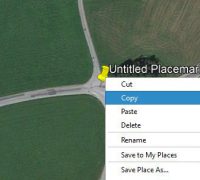When we worked up our procedure for importing Lidar into Civil3D, we realized there were way too many steps and way too many hoops to jump through. Hoops preparing the data, through Recap to prepare a RCP/RCS, through Civil3D creating a point cloud, and finally creating the surface. Highly trained professionals have more important things to do with their time than spend it like a well trained circus animal jumping through hoops, so we did something about it.
A common desire for Civil3D users is the ability to export the contents of the civil tables, which are not standard CAD tables. However, the copy to clipboard approach results in an image that (while better than nothing) will not allow data extraction by other applications. We’ve had this capability in our full C3DTools add-on for years but since everyone doesn’t have a budget for the full package, we chose to chip this one off as a more affordable option.
The update / upgrade process of C3DTools is done differently than the rest of our products. Instead of building a collection of tools that are released together annually, we develop and test each tool in house and include the new functionality right away. End users can choose when they want to download the new tool(s) by either running our Check for Updates (from the web) periodically or by downloading a replacement complete install (MSI file).
Read More →
AutoCAD has a long history, and we go back all the way. Our primary developer started using AutoCAD with version 1.0 on the original IBM PC with a 10mb hard drive and CGA graphics (now we have mp3 files larger than that). Here is a detailed history, including corresponding drawing versions, .NET framework used, etc.
Due to the age of the AutoCAD Releases 2010 through 2014, support will be dropped in future versions of MapWorks. If this is a problem for your group, please contact support@dotsoft.com as soon as possible.
The update / upgrade process of C3DTools is done differently than the rest of our products. Instead of building a collection of tools that are released together annually, we develop and test each tool in house and include the new functionality right away. End users can choose when they want to download the new tool(s) by either running our Check for Updates (from the web) periodically or by downloading a replacement complete install (MSI file).
Read More →
Most users won’t hit this limit and shouldn’t worry about it until they do. However a handful of our users processing extremely massive surfaces have reported an error message like “System.OutOfMemoryException” and/or “Array dimensions exceeded supported range”.
Lidar data in its delivered state usually contains many more points than PC CAD based systems can handle. Not naming any names, but we’ve personally seem 30 million plus points bring well known PC CAD software to a grinding halt, locking up the session leading to a task manager shut down. All the points in a 30 acre project could hit that point. So there must be some filtering (weeding) in place even for small projects.
Read More →
It’s a common occurrence to receive a drawing from outside sources that do not have a coordinate system assigned. This value is easy to check at the command prompt using the CGEOCS system variable, which shows “” (blank) when the system has not been assigned.
Read More →
We have been receiving support issues ranging from program files being invisible (as in saying it can’t find a file you know is there) to outright alerts of our code being a virus. These have of course turned out to be false positives, a failure on the part of the antivirus software. A company that’s been in business for nearly 30 years does not produce viruses.
